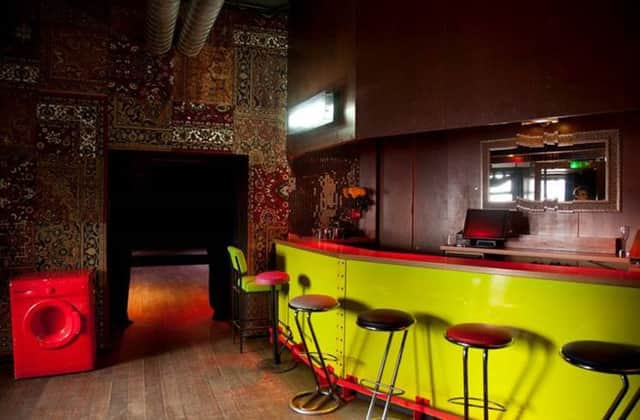Glasgow: Bonny and Clyde


And then I spot it, a vertical signboard, black against a faded grey building, displaying six white capital letters in mirror image: “EMPIRE”. It calls up vague memories of a similar sign in Hitchcock’s Vertigo, or the Merchant City’s associations with the slave trade. “It doesn’t belong to anything,” confirms the guide. “It’s a Douglas Gordon installation.”
Like the trademark red sandstone of its buildings, public art colours the streets of Glasgow. Some of it is made by established names like Gordon, the irreverent Glaswegian video artist; some, such as the remarkable murals that dot Mitchell Street, is the work of amateurs.
Advertisement
Hide AdAdvertisement
Hide AdSome of it is beautiful, some bracingly crude. Some of it is on full display, while some – like the “EMPIRE” sign – needs to be sought out. But all of it points to one thing: a brilliantly creative expression in a city containing Europe’s largest collection of civic art.
This is important, because it counters the tired stereotypes about Glasgow so beloved of the media: images of a crime-ridden, hard-drinking cultural wasteland.
The arrival of the Turner Prize may mark a turning point. Whatever you think of the prize, which this year is hosted by the Tramway arts centre, there’s no denying its star power. Indeed, its judges have been doing more than anyone else to put Glasgow on the cultural map – artists based in the city make the shortlist of four almost every year, and routinely win (Gordon was awarded the gong in 1996). Given that Glasgow only accounts for 3.5 per cent of the UK’s population, this is a remarkable feat. To understand it, one might start with a visit to the Glasgow School of Art. Spreading out over one of the city’s signature drumlin hills, its complex of studios and research centres draws in talent from across the world, and consistently churns out successful artists – including four of the last ten Turner Prize winners.
Pride in their city is palpable among the students, who run insightful walking tours of its art and architecture (such as the one that took me past the “EMPIRE” sign). Crucially, cheap rents encourage many to stay in the city after their studies, ensuring a fruitful mingling of recent graduates and high-profile alumni on the scene.
Advertisement
Hide AdAdvertisement
Hide AdCalum Matheson, a painter and ex-GSA student, shows me around his new base – the sprawling SWG3 studios in the West End, which house some 120 artists in a former warehouse and under railway arches (leased from Network Rail for £1 a year). A bustling bag makers’ atelier neighbours a graphic design studio, its walls adorned with literary quotes in esoteric typefaces.
Next door, the 120-capacity Poetry Club, created by pop-obsessed visual artist and – you guessed it – former Turner nominee Jim Lambie, puts on regular spoken word and club nights.
With its whitewashed cement walls and bared ventilation, SWG3 embodies the spirit of the new Glasgow; the transition in its stock-in-trade, so to speak, from industry to culture.
This story of regeneration is playing out across the city, from the scuzzy-chic West End to the spirited Speirs Lock district. Here, on the bank of the Forth and Clyde Canal, sits The Glue Factory. Its labyrinthine venue encompasses studios, galleries and performance spaces.
Advertisement
Hide AdAdvertisement
Hide AdLike SWG3, the Glue Factory has close ties to the GSA. And like SWG3, it makes an aesthetic virtue of its rusty furnishings and crumbling industrial infrastructure.
Glasgow the industrial powerhouse is dead, but Glasgow the creative hub, has come of age.
Alex Dudok de Wit was a guest of the Glasgow City Marketing Bureau. The Turner Prize exhibition will be on display at Tramway (www.tramway.org) until January 17. Entrance is free.